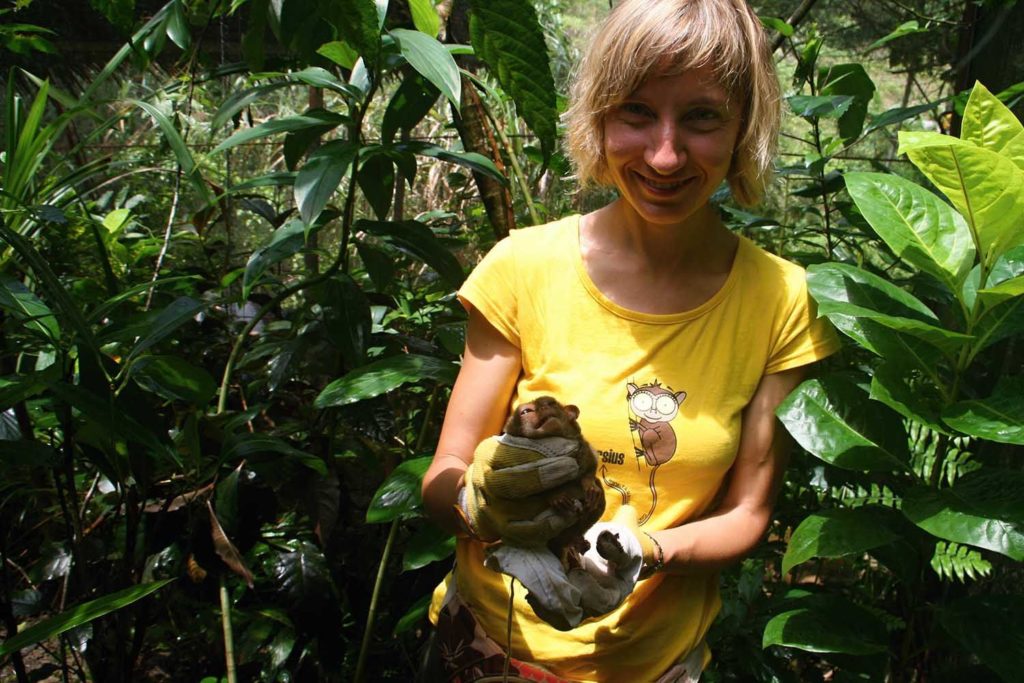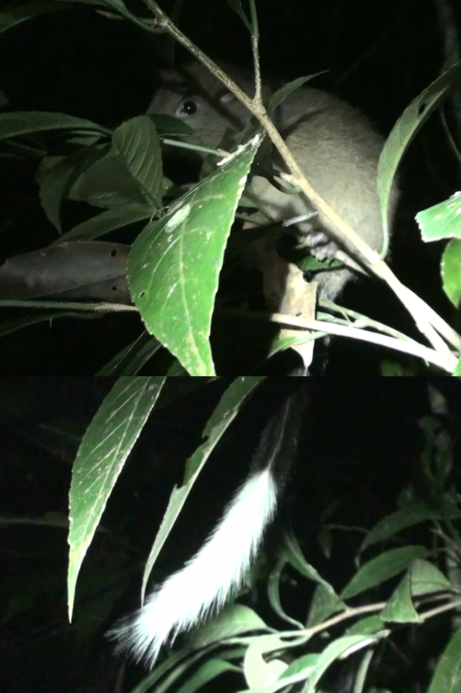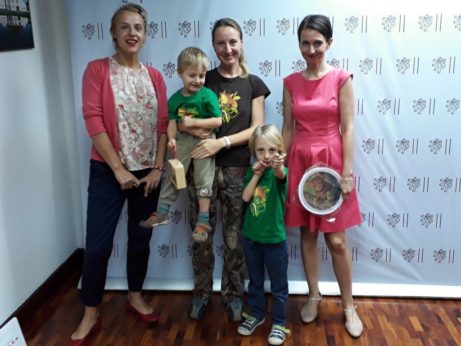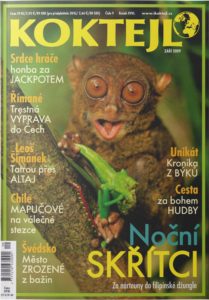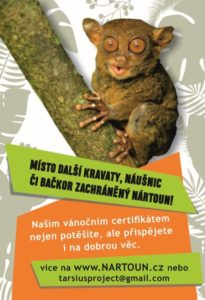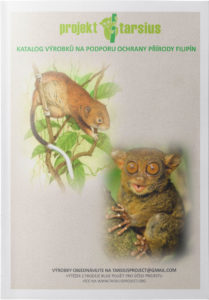Press release – Philippine tarsier, one of the world´s most endangered primate, born in Tarsius Project Conservation centre
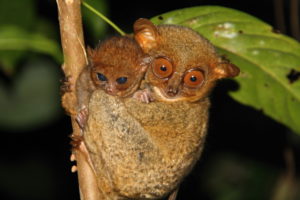
Philippine tarsier mother and baby, photo Milada Řeháková
A baby of the Philippine tarsier (Tarsius syrichta) was born in the Tarsius Project Conservation Centre on Bohol Island, Philippines. The tarsier baby was born on 30th April and now after more than one month it seems to be active and healthy and the mother Nina takes a good care of him. So there is a good chance that the young will survive. It is a huge success as this primate is currently not successfully kept anywhere in the world due to difficulties with its breeding. Philippine tarsier is one of the world´s most endangered primate. Therefore, one of The Tarsius Project´s goals is to establish a backup population to avoid complete population extinction in case those animals will get extinct in the wild.
Philippine tarsier (Tarsius syrichta) is a small nocturnal primate. It belongs to the least known nocturnal primates. Tarsiers and the Philippines remaining biodiversity and the ecosystems are under tremendous threats from the increasing human population. Because of its cute appearance tarsiers are often hunted and illegally sold as pets. Recently, the IUCN SSC Primate Specialist Group added the Philippine Tarsier on the list of 25th most endangered primates of the world. The Tarsius Project, led by a Czech zoologist RNDr. Milada Řeháková, Ph.D., focuses on conservation of this species since 2009, as the only long-term project combining research, conservation education, captive breeding and welfare, and ecotourism in order to protect this unique animal species. It has achieved several successes so far and now is achieving another very important one.
Currently, there is no captive population that might serve as a backup population. Philippine tarsiers have never been successfully kept and bred in zoos worldwide, although there were several attempts in the past. “We decided to try breeding of the Philippine tarsiers in natural environment with natural climate and diet, therefore we built a special enclosure directly on Bohol Island, Philippines, in cooperation with Habitat Bohol Conservation Centre. Other benefit is that there is also no stress during long transport. Apart from its conservation value, the centre allows us to get information about tarsiers, which would be very difficult to get in the wild” confirms Dr. Milada Řeháková.
In 2014-2015 the Tarsius Project managed to get first tarsiers couple – Nina and Julius. In autumn 2016 zoologists observed mating and at the beginning of March 2017 there was indicated increase of weight of Nina. After 6 months of pregnancy Nina gave a birth to a healthy young tarsier. New born tarsiers weight one third of mother´s weight and are transported in mother´s mouth as shown on the video. “We honestly hope that we can raise the little one to adulthood and even breed it in next generations, which would be for the first time ever and it would be a great success on the world scale” emphasized Dr. Milada Řeháková.
